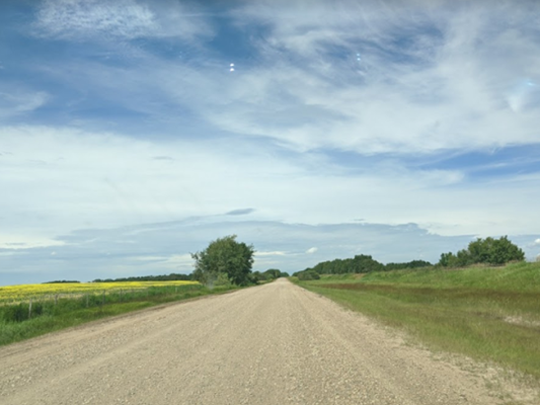Biosphere Stories: Tales from the Hay Lakes Trail

By Katja Schreiner
While certainly not the first nor likely the last trip locals have taken down the Hay Lakes Trail, this tale speaks to the significance of community involvement and perseverance, something residents of the Beaver Hills are no strangers to.
Nothing more than an unassuming gravel road in the north east corner of Leduc County, which runs diagonally through the south west portion of the Beaver Hills Biosphere, the modern-day Hay Lakes Trail yields little of its history to the untrained eye. The small green sign indicating its presence is modest and easily missed. Yet this trail was vital to early pioneers and industry in Alberta and boasts of a unique trip along its length.
As part of the Blackfoot Indian Trail network, the Hay Lakes Trail served as a link between the small settler community of Hay Lakes and the larger metropolis of Edmonton. Dating back to the establishment of Fort Edmonton, Indigenous peoples used the trail on their way to engage in trading at the fort. Ownership and control of the territory surrounding the Hay Lakes Trail was often in dispute amongst the Indigenous nations inhabiting the area.
The trail also proved to be important for settlers and the Canadian National Railroad from Edmonton to Camrose traces its path, as does an old telegraph line serving New Sarepta built in 1876. However, among all the treks down the trail, the most well-known involved Yardley Jones, renowned Edmonton Journal cartoonist, who, with a group of people, set out in March 1963 to challenge the walking record of CHED radio station’s John Dolan who had walked from Wetaskiwin to Edmonton in 18.5 hours.
After stumbling upon the village of New Sarepta in 1960 while searching for Miquelon Lake, Jones became quite fond of the town and immortalized it in numerous of his editorial cartoons. Jones would later be named honorary Mayor of New Sarepta.
Motivated by the fitness frenzy inspired by John Kennedy’s statement that, “American soldiers should be able to walk 50 miles in less than 20 hours,” and John Dolan’s challenge to beat his 50-mile walkathon time , on March 4, 1963, Jones led community members and students on a 50-mile walk from New Sarepta to Edmonton via the Hay Lakes Trail. By the time the group made it to Edmonton only four remained. The final four, Yardley Jones, Edmonton Journal columnist Barry Westgate, Transit Hotel manager Dan Mandaryk and high school student Erika Wanke (who, without permission, borrowed her mother’s winter boots and joined the trek), completed the walk in 16.5 hours.
In 2013, to mark its 50th anniversary, this historic walk along the Hay Lakes Trail was once again celebrated and commemorated for raising the profile of recreation, fitness and health in the community.
This is just one great example of the stories, memories, experiences and perspectives being gathered for a research project currently underway that aims to tell the stories of the Beaver Hills and the deep cultural connection many have to this special place.
About the author: Katja Schreiner is a fifth-year undergraduate student studying kinesiology at the University of Alberta. She is also a volunteer student research assistant in the Beaver Hills Biosphere Mitacs project and, in summer 2020, she had the pleasure of working alongside Dr. PearlAnn Reichwein and Linnea Bell, whom she thanks for their guidance and encouragement with this article.